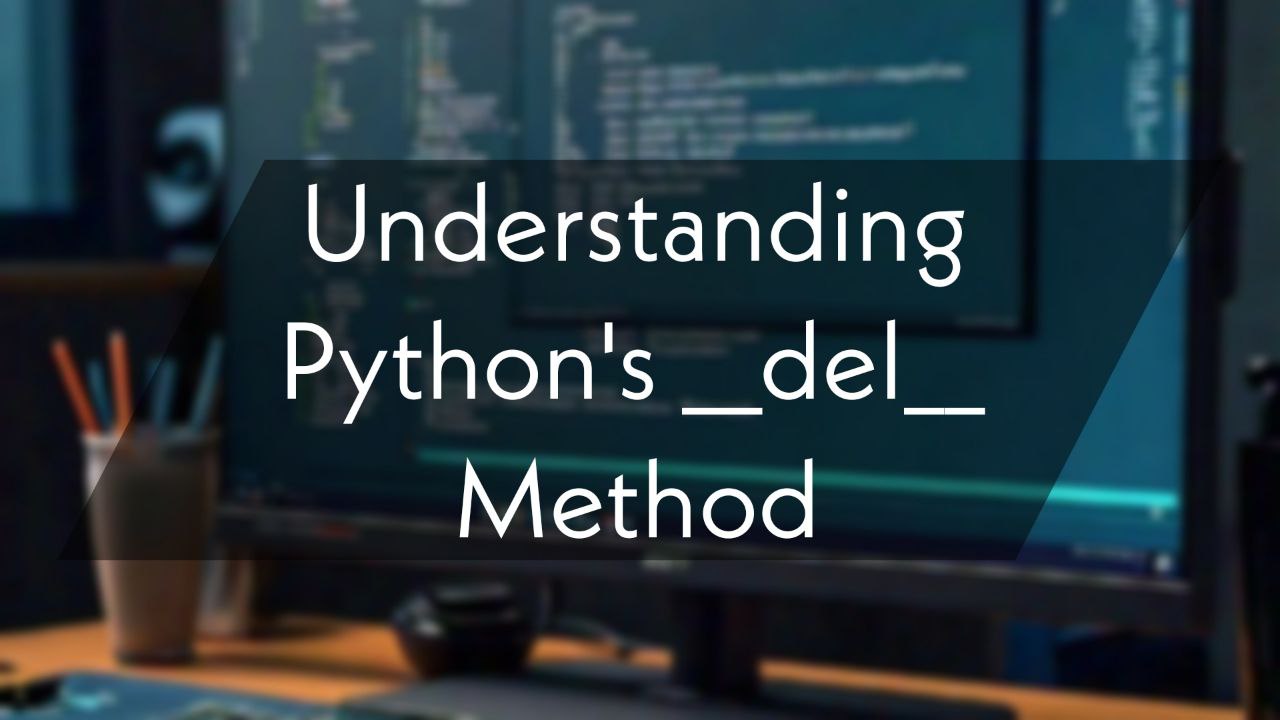Python’s __del__ method, also known as a destructor, is a special method that gets called when an object is about to be destroyed. However, its behaviour can be confusing and unpredictable, leading to potential issues in your code. In this post, we’ll explore a common problem with __del__, discuss why it occurs, and provide better alternatives for resource management in Python.
The Problem with __del__
Consider the following Python code:
import types
class Dummy():
def __init__(self, name):
self.name = name
def __del__(self):
print("delete", self.name)
d2 = Dummy("d2")
def func(self):
print("func called")
d2.func = types.MethodType(func, d2)
d2.func()
del d2
d2 = None
print("after d2")
You might expect the __del__ method to be called when we delete d2. However, the destructor for d2 is never called in this case. Why does this happen?
The Circular Reference Problem
The issue here is a circular reference. When we add the func method to d2 using types.MethodType(func, d2), we create a reference cycle:
- d2 holds a reference to func
- func holds a reference back to d2
This circular reference prevents Python’s garbage collector from immediately cleaning up the object, even when we explicitly delete it and set it to None.
Why Relying on __del__ is Problematic
There are several reasons why depending on __del__ for resource management is not recommended:
- __del__ is not guaranteed to be called, especially in cases of circular references.
- The timing of __del__ execution is unpredictable.
- Different Python implementations (CPython, Jython, PyPy) handle garbage collection differently.
- __del__ can cause issues with exception handling and program termination.
Better Alternatives for Resource Management
1. Use Context Managers with the ‘with’ Statement
Context managers provide a more reliable way to manage resources. Here’s an example:
class Dummy:
def __enter__(self):
return self
def __exit__(self, type, value, traceback):
print("Destroying", self)
with Dummy() as dummy:
# Do whatever you want with dummy in here
# __exit__ will be called before you get here
This approach guarantees that the __exit__ method will be called, even if an exception occurs.
2. Explicit Resource Management
Create explicit methods for resource cleanup and call them when needed:
class Dummy:
def __init__(self, name):
self.name = name
def cleanup(self):
print("Cleaning up", self.name)
d = Dummy("example")
# Use d...
d.cleanup()
3. Use weakref for Dynamically Bound Methods
If you need to dynamically bind methods to objects, consider using the weakref module to avoid circular references:
import types, weakref
class Dummy():
def __init__(self, name):
self.name = name
def __del__(self):
print("delete", self.name)
d2 = Dummy("d2")
def func(self):
print("func called")
d2.func = types.MethodType(func, weakref.ref(d2))
d2.func()
del d2
d2 = None
print("after d2")
Conclusion
While Python’s __del__ method can seem like a convenient way to handle object cleanup, it’s often better to avoid it due to its unpredictable nature. Instead, use context managers, explicit cleanup methods, or weakref when dealing with dynamic method binding. These approaches provide more reliable and predictable resource management in your Python programs.
Remember, clear and explicit resource management leads to more maintainable and bug-free code. Happy coding!

